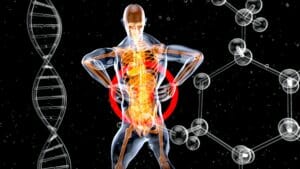What are kidney stones?
Kidney stones are solid masses of crystals. They can be located anywhere along the urinary tract. Which consists of
- Kidneys
- Ureters, or tubes that drain the kidneys
- Bladder
What are the symptoms of kidney stones?
Kidney stone generally do not cause symptoms until they move within your kidney or pass into ureter. It can be extremely painful, and you may feel any of the following:
- Pain in the area which is called the flank
- Pain in the abdomen on the side where the kidney stone is
- Pain into the groin
- Pain while urinating
Other symptoms may include:
- Red or brown urine
- Cloudy urine
- Nausea and vomiting.
- Fever
Causes of kidney stones
Why do people get kidney stones? Some of the factors may increase your risk of getting them, including:
- Dehydration: If you’re not drinking enough fluids, you are at risk of getting kidney stones.
- Dietary factors: If you have a specific diet that might be high in protein or high at oxalate-rich foods, those can cause you to have kidney stones.
- Metabolic factors or genetic factors: Metabolic factors or genetic factors can cause some people to be more predisposed to kidney stones than others.
How are kidney stones treated?
What are the treatments for kidney stones? The treatment of kidney stone depends on several factors which include:
- Size
- Pain
- Cause
- Composition
- Location
To get answers to these questions and to choose the right treatment, certain tests are taken such as an x-ray or a CT scan without contrast. Depending on the size of the stone if it’s less than 5 mm, patients have about a 50% chance of passing it on their own and they can do that as long as their pain is well-tolerated, they don’t have an infection, and they’re able to eat and drink.
Shockwave lithotripsy
Shockwave lithotripsy is non-invasive in which shock waves are applied to the area of the kidney where the stone is. This requires anesthesia.
Ureteroscopy
During ureteroscopy, under anesthesia, a small camera is inserted into a urethra and passed into the bladder and up the ureter. When the stone is found, it is broken down into small pieces using a small laser. If the stone is small enough, it can be pulled out using a basket.
Medical expulsion therapy
In medical expulsion therapy, you can take medications such as tamsulosin, which are alpha-blockers that help relax the smooth muscle in the ureter and help you pass the stone.
Prevention for kidney stones
- I recommend drinking lots and lots of fluids up to 2-3 L a day.
- For dietary changes, I recommend having a low sodium diet and a low animal protein diet and also avoid oxalate-rich foods like beets, spinach, or rhubarb.
- Continue moderate calcium intake – make sure you’re not completely eliminating calcium but don’t overdo it on the calcium. Calcium can be found in foods like dairy, cheese, and milk.
- Avoid high doses of vitamin C or vitamin D.
- Add citrate to your diet – consider adding some crystal light to your water.



